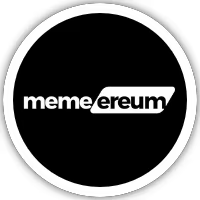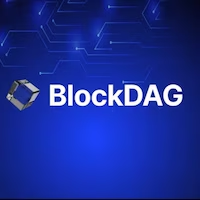| ICO Name | Date start | Date end | Token blockchain | Rating |
|---|---|---|---|---|

Memereum |
January 1, 2024 | - | BNB |
|

Pepe Ascension |
December 19, 2024 | April 19, 2025 | Ethereum |
|

Coldware |
February 10, 2025 | - |
|
|

PlutoChain |
November 7, 2024 | - | Ethereum |
|

BlockDAG |
February 2, 2024 | - |
|
|

QubeticsSOLD OUT |
September 27, 2024 | May 27, 2025 |
|
Blockchain Token Presales: How Digital Assets Are Powering the Next Wave of Crypto Fundraising
Blockchain tokens are digital assets created and managed by smart contracts on networks like Ethereum, Solana, or BNB Chain. They form the core infrastructure for crypto presales and ICOs (Initial Coin Offerings), offering early investors the opportunity to buy into a project before its public launch.
What Makes a Token a “Blockchain Token”?
A blockchain token is a programmable digital unit that can represent:
- A store of value
- Real-world assets (e.g., property, art, supply chain goods)
- Access rights (e.g., governance voting, platform features)
- Currency representations (e.g., stablecoins)
These tokens are the primary mechanism used in blockchain presales, where early backers acquire tokens at discounted rates.
Categories of Blockchain Tokens
1. Fungible Tokens (FTs) – Most Common in Presales
These tokens are interchangeable, just like traditional money. Each token has the same value and can be traded 1:1.
Common use cases:
- Presale utility tokens for platform access
- Stablecoins like USDC or USDT
- Governance and reward tokens
Key properties:
- Name and symbol (e.g., $ABC)
- Total supply
- Decimal precision (e.g., 18 decimals)
- ERC-20, BEP-20, or similar standards
2. Non-Fungible Tokens (NFTs) – Rarely Used in ICOs
Each NFT is unique and non-interchangeable. While NFTs dominate in gaming, art, and collectibles, some presales offer NFT-based access passes or exclusive rights.
Key NFT traits:
- Unique metadata (IPFS or on-chain)
- Symbol and total supply
- ERC-721 or ERC-1155 standards
3. Presale-Specific Blockchain Tokens
These tokens are purpose-built for early-stage investment rounds. They are typically ERC-20 or similar fungible tokens, but carry features tailored for:
- Vesting schedules
- Token unlock timelines
- Governance privileges
- Buy-back or burn mechanisms
They are often launched in multi-stage presales, such as:
- Seed Round (private)
- Public Presale (open to retail)
- Post-ICO Launch (listing on DEX/CEX)
Token Types vs Presale Use
| Token Type | Standard | Used in Presales? | Key Use Cases |
|---|---|---|---|
| Fungible Token (FT) | ERC-20, BEP-20 | Yes | Utility, governance, staking rewards |
| Non-Fungible Token (NFT) | ERC-721, 1155 | Rare | Access passes, limited perks |
| Presale Utility Token | ERC-20 | Specifically | Early investor access, vesting, ICO |
| Stablecoin | ERC-20 | Used for Payment | USDC/USDT used to buy presale tokens |
Tokens in Ethereum and ICO Standards
On Ethereum, tokens are deployed through smart contracts—self-executing code that defines the token’s behavior. Common Ethereum token standards include:
- ERC-20: Most ICO and presale tokens follow this fungible standard.
- ERC-721: Used for NFTs (less common in presales).
- ERC-1155: Combines FTs and NFTs into one contract.
- ERC-777: Offers advanced features over ERC-20, occasionally used in modern presales.
How to Analyze Presale Tokens
Platforms like Chainlens, Etherscan, or DexTools allow you to inspect token contracts, metrics, and presale activity:
- View token supply and holders
- Verify contract audit status
- Check vesting mechanisms
- Analyze liquidity lock details
